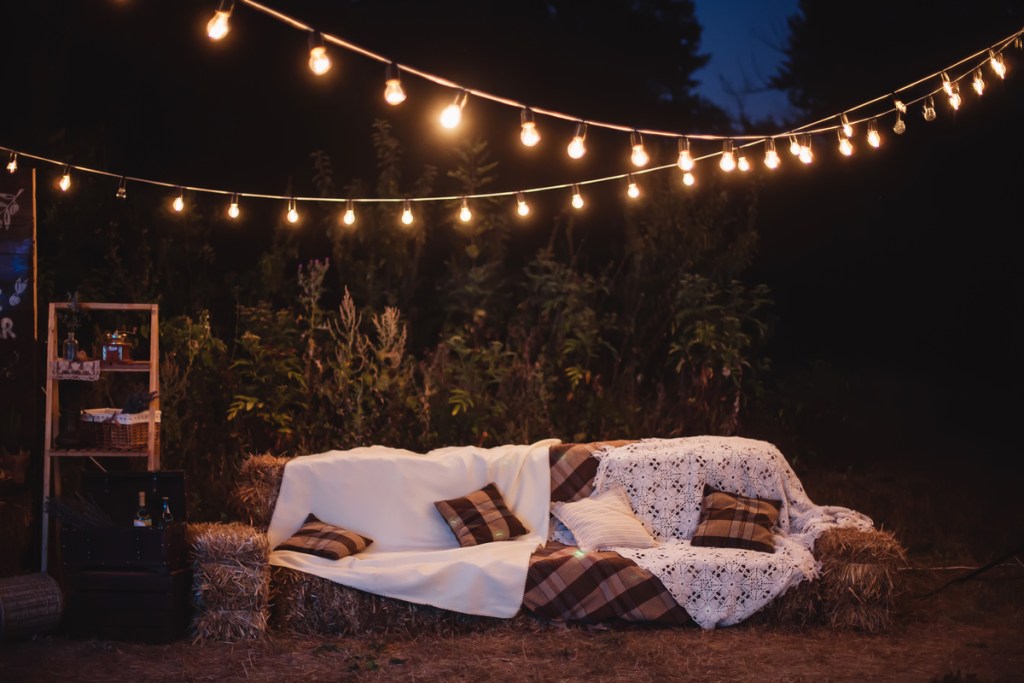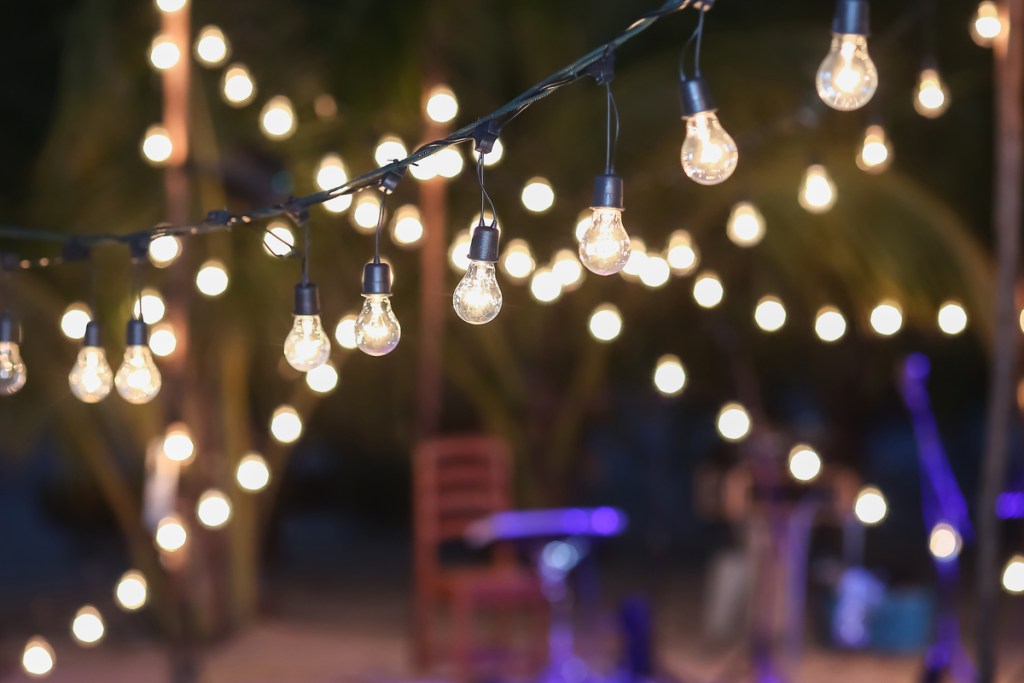The many outdoor lighting options out there have the capacity to transform any backyard, deck, or patio into something remarkably beautiful. But have you ever bought a string of lights only to have it be slightly too long for where you want to hang it? And then you have to decide where to put the excess portion because you don’t want to leave it dangling, but you might not want it to look off-balance from the other end. If you don’t mind a little asymmetry, then don’t sweat it! But if you do, you’re probably wondering, “Can you cut string lights?” The short answer is yes.

Choosing your outdoor lights
Before even thinking about how to cut string lights, you should make sure that the ones you choose are safe for outdoor use. Not only is it unsafe to use indoor lights outside in general, but it will be even more unsafe after you cut them. So always double-check before purchasing lights for use outside to make sure that the ones you have can endure the outdoor conditions!
Even besides the safety issues, when you use indoor lights outside, they’re more prone to dying out in a small amount of time or even shorting out when they get wet. These problems are even more likely once they’ve been cut.
Step 1: Look at the safety ratings on lights you're interested in purchasing to ensure they are rated for outdoor use. A good rule of thumb is that most rope lights, lights that are labeled as patio lights, and Christmas lights are usually safe to be used outdoors because they’re made with durable materials. However, some Christmas lights are only for indoor use, so it’s always a good idea to look at the rating.
Step 2: If you need extension cords, buy cords that are safe for outdoor use. You can usually find their safety rating stamped on the cords themselves. Their thicker insulation makes them better for withstanding weather conditions.

What lights are best for cutting?
In theory, you can cut any type of outdoor hanging lights as long as you know how to do so safely; however, there are companies that sell string lights specifically designed for being cut to a desired length. Note that the ones designed to be cut are far more expensive than standard strands because they come with a large amount of lights to accommodate more customizable lengths.
That said, it is possible to cut regular string lights to a desired length as long as you do so safely and don’t plug them in until you’re sure they’ve been cut and mended correctly. So if you can’t afford the price of the designed-to-be-cut outdoor hanging lights, you can still buy regular strands labeled for outdoor use and snip them to your preferred length.
Step 1: If your budget allows, opt for lights that are designed to be cut to a customizable length. Since they’re designed to be cut, there’s much less of a safety risk, and you’ll have room to work with if you ever decide you want to cut more.
Step 2: When buying lights designed to be cut, you'll need to purchase plugs for them. Customizable lights do not come with attached plugs like standard outdoor lights do.
Step 3: If you are planning to purchase and cut regular string lights, don't plug them in until you are sure they have been cut and mended correctly. See the following section for instructions.

How to safely cut string lights
It’s a somewhat complicated process that we’ll outline as best we can. As long as everything is done neatly and the proper tools are used, you’ll be able to hang these lights outdoors with no problem. That said, if you have any questions, don’t hesitate to research further! There are videos and tutorials available to help you, if needed.
Step 1: Gather your materials (the lights you wish to cut, wire cutters, outdoor/waterproof wire connectors, and waterproof electrical tape).
Step 2: Because you’ll be working with exposed wires, you’ll want to use an abundance of caution. Make sure nothing is plugged in while you’re cutting and repairing the lights, and don’t plug them in until you’re sure the hazard is minimal and all the wires are properly covered.
Step 3: Identify each side of every section on your strand. If you’ve ever had to replace a bulb on Christmas lights, you know that if one goes out, a whole portion goes out. This is one section. So to identify each section on the strand, simply remove a bulb and mark the beginnings and ends of where the lights go out. When cutting standard outdoor hanging lights, your best option will be to remove a whole section at a time.
Step 4: After you’ve identified each section, cut the (unplugged!) strand where there are only two wires and cap each cut wire with an outdoor/waterproof wire connector.
Step 5: Cover any remaining exposed wire with weatherproof electrical tape.
Step 6: Once everything is safely cut and the ends are taped over, plug the lights in to make sure they work.

What if you only want to remove a few bulbs, not a whole section?
Although not an ideal scenario, it is possible to only remove a few bulbs; however, you don’t want to remove too many. The reason why removing a whole section is the best way is because outdoor hanging lights that are wired in sections spread 120 volts throughout the whole strand.
When you only take away a few lights instead of a whole section, the voltage that’s sent to the remaining bulbs increases and will prematurely blow out the strand. If you’re only removing a small number of bulbs, this isn’t a big deal; however, be cautious of removing too many bulbs.

Alternatives to cutting outdoor string lights
If the thought of cutting string lights is daunting, you can always look for creative solutions. If you're sticking with string lights, you can allow your lights to dip in the air or wrap them around various structures in your yard, such as tall, established trees. Moreover, you can also get creative with your setup to hide the extra string.
Some savvy DIYers put the excess string lights on full display, allowing the lights to cascade down fences and plants for a magical look. If you're less than confident about managing excess string lighting, you can always chat with a lighting professional to install your lights beautifully and safely.
When trimming your lights to fit a particular space, the most ideal scenario would be cutting outdoor hanging lights that are designed to be customized. However, that isn’t always an option. As long as you do everything safely and properly, you’ll be able to cut standard string lights to a desired length and still be able to enjoy a nice outdoor atmosphere.



